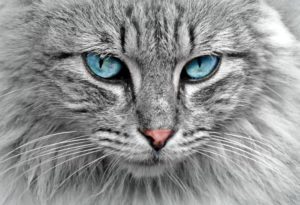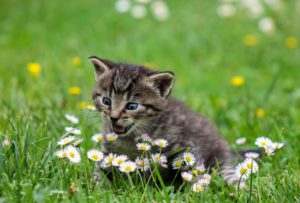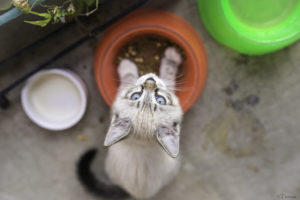House plants can be a fantastic way to improve your air quality, brighten up your surroundings, and make your home feel like a nicer place. However, sometimes your cat can disagree. Cats can cause problems with house plants. They like to climb, play, and generally make mischievous with big pots of soil. This is often a bad fit in a house full of plants. There can also be other issues, many house plants are toxic to cats. Does that mean we can’t have plants and are there any cat friendly plants?
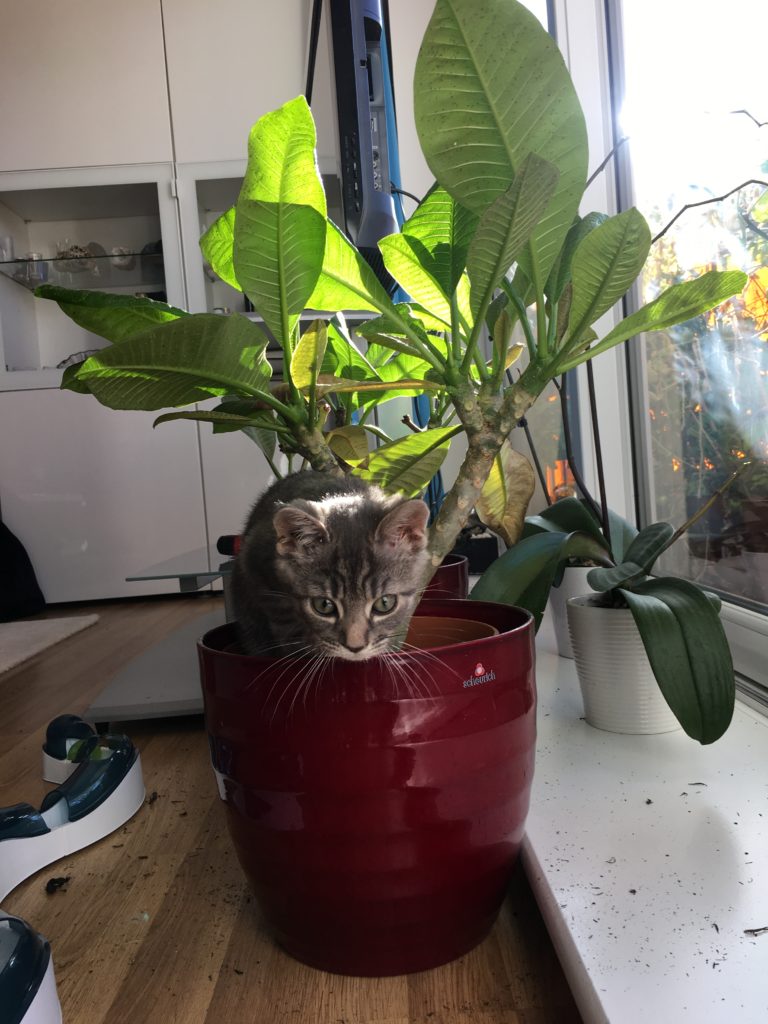 It might seem like you have to choose between keeping house plants around to improve your air quality and keeping a house that is safe for your cat. Some house plants can cause really nasty reactions from your pet. If you’re conscious of these dangers, you can avoid the types of house plants that are likely to cause problems. You can also know what symptoms to look out for. This will help you stop any potential negative reaction as soon as it happens.
It might seem like you have to choose between keeping house plants around to improve your air quality and keeping a house that is safe for your cat. Some house plants can cause really nasty reactions from your pet. If you’re conscious of these dangers, you can avoid the types of house plants that are likely to cause problems. You can also know what symptoms to look out for. This will help you stop any potential negative reaction as soon as it happens.
Cats like to play with house plants too. You can try and train them, but often your cat will see red at the sight of a big pot. House plants can also look very similar to a toilet in the eyes of many cats. Between this and possible poisoning, it is easy to see why some cat owners give up on house plants. However, having house plants around can give both people and animals a lot of benefits. They help keep the air clear, increase mindfulness, and reduce stress. House plants can have all sorts of positive effects on you and your pet. It is worth trying to find a way to keep your pet happy and safe, while having house plants around. But first, let’s see which are not cat friendly plants.
House Plants That Are Toxic to Cats
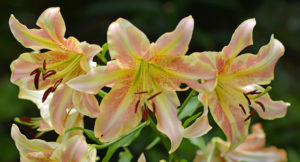
Cats will end up climbing and playing all over most things that end up in their line of sight. No matter how entertained they are, eventually, your cat will at least sniff your house plant. This makes it inevitable that your cat will come into contact with any house plant you have around. No amount of training can make a house plant cat-proof. With some plants, the only way to keep your cat away forever is to not have them or keep them somewhere inaccessible to your cat. Most house plants won’t need such harsh preventative steps. However, for plants that are toxic to your pet, this is very important.
A lot of house plants that are toxic to pets are largely irritants. This doesn’t just mean they irritate the skin; they can irritate most parts of your cats including their organs. They can poison your cat if they are ingested. However, breathing around them can cause your cat problems as well as coming into physical contact with the plant. Touching these house plants can cause rashes and irritation. It also increases the chances of them ingesting part of the plant.
These are the most common house plants that are toxic to cats and are therefore not cat friendly plants:
- Amaryllis
- Autumn Crocus (Or Meadow Saffron)
- Azaleas
- Ricinus (Castor Bean Plant)
- Cannabis
- Chrysanthemum
- Cyclamen
- English Ivy
- Kalanchoe
- Lilies
- Oleander
- Peace Lily
- Pothos
- Rhododendrons
- Sago Palm
- Spanish thyme
- Tulip and Narcissus bulbs
- Yew
What to Do If Your Cat Eats A Toxic Plant
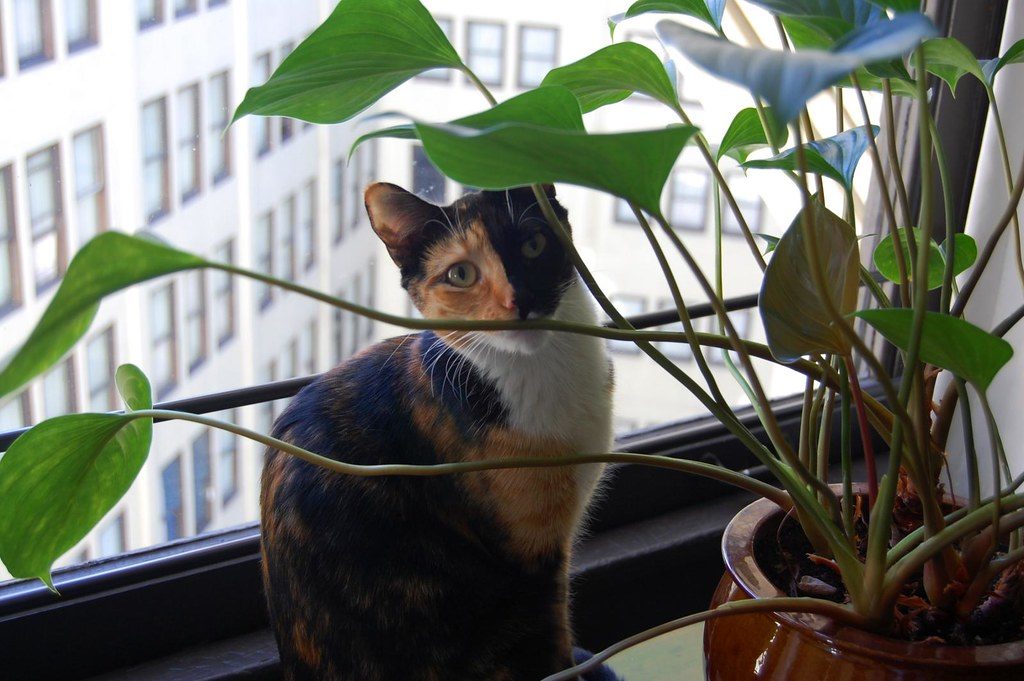
These plants are all extremely toxic to your cat. You shouldn’t allow your cat near them. With these really dangerous plants, it is best not to have them in the house at all. However, if your cat has accidentally come into contact with one of these you should be prepared. The quicker you spot the symptoms of this type of poisoning, the quicker you can treat your cat.
Warning signs include difficulty breathing, excessive drooling or difficulty swallowing, vomiting, diarrhoea, excessive drinking and urination, and an irregular heartbeat. Each of these symptoms will point towards the plant has had an effect on different parts of your cat. More general symptoms include irritation of their skin. Your cat’s skin can become red, swollen, or itchy. It is also possible that they will get itchiness in their skin and mouth when around toxic plants. This can make it difficult for them to breathe. These symptoms are all quite serious and can cause quite a bit of harm to your cat.
If you notice any of these symptoms it is important to seek treatment as soon as possible. You should first check for any materials from any plants that might still be attached to your cat or in their mouth. Removing this is the first step. You can then use warm water to try and soothe any skin irritations while you arrange further care. You need to seek veterinary attention as soon as possible. While you are doing this, it is important to try and find out what plant caused the reaction. Identifying the plant before seeking medical attention means that your vet can immediately begin treating your cat. This will make the whole process a lot quicker and safer.
Benefits of House Plants
With all of these potential dangers, some cat owners might be wondering why anyone would expose their pet to house plants. For the most part, there are cat friendly plants that are perfectly safe for your cat and shouldn’t cause too many problems. These few poisonous breeds are the exception rather than the rule. There are actually many benefits to having non-toxic house plants around your cat. As long as you check the safety of the plant before bringing it into your home, it should be safe for your cat. You also have to ensure your cat has no specific allergies. They might have symptoms from house plants that aren’t commonly known as bad for cats.
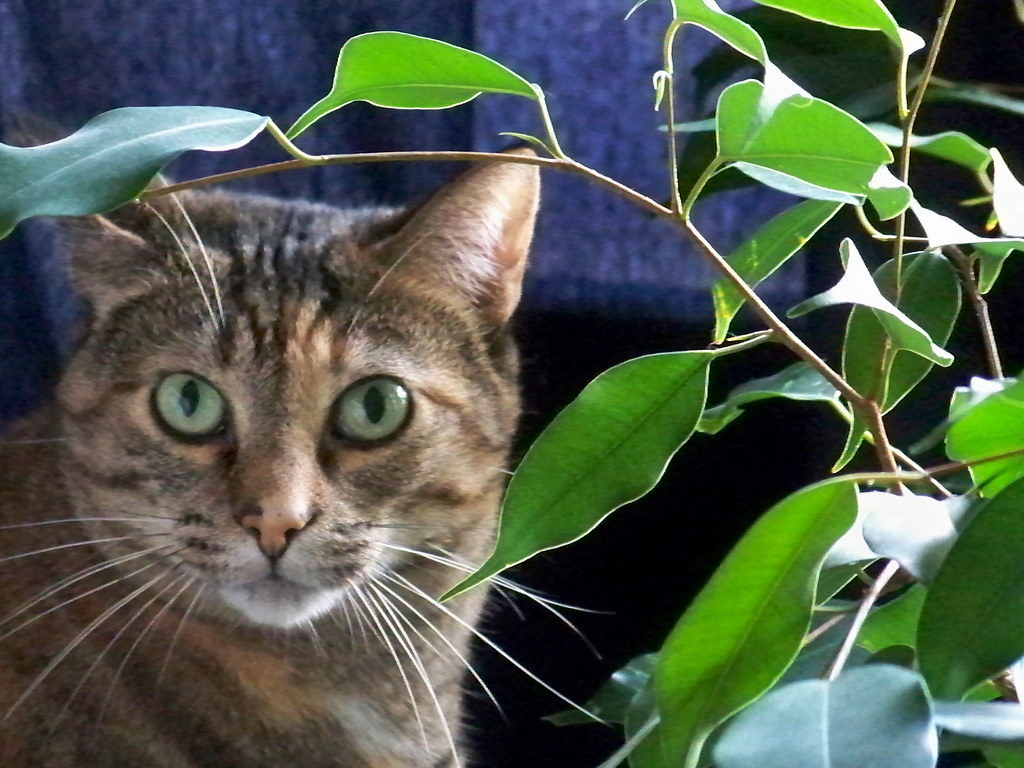
One of the main positives of having plenty of house plants around is air quality. House plants are a great way of naturally purifying and cleaning your air. This benefits you, but it is also just as good for your cat. This can be particularly helpful in urban areas. If you live in an apartment or space where your cat cannot spend too much time outside, then cat friendly plants are a great way to improve their health. The clearer air will be of real benefit to indoor cats. The natural surroundings are a great way to liven things up for an indoor cat.
Studies have also found that plants have a massive impact on human wellness and stress levels. There isn’t any research at the moment to determine if this is similarly the case for cats. However, it couldn’t hurt. It is likely that the increased air quality will have a larger positive effect on their wellbeing as well as yours. Adding some much needed green to indoor spaces can help you reduce your stress levels, making a nicer all-around environment for your pet.
House Plants that Are Good for Cats
If you’ve decided that you do want to enrich your cat’s life with a house plant, you need to be sure that the plant you chose is not toxic. While the previous list gives you some plants to ensure you don’t bring home, there are some that you should seek out. These are cat friendly plants. They should cause no irritation or reaction from most cats. They also are specifically house plants recommended for getting the biggest benefit to health and air quality.
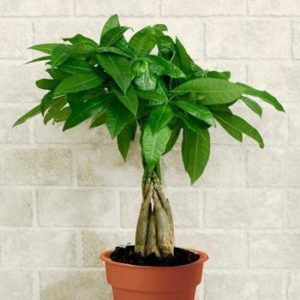
A money tree is a fantastic indoor plant to have around with pets in the house. These plants are well known for greatly improving the air quality in a home. This is particularly helpful in urban areas with poor air quality. These plants have the benefit of getting quite large. If your cat is well-behaved enough to be trusted around such a big pot of dirt, this could really brighten up your cat’s surroundings. If they are capable of sensible play around such a large plant, it can bring some much-needed variety to their surroundings.
A Boston Fern is another plant that is often recommended to help improve air quality for those living in a house. These plants naturally detoxify the space around you. This improved air quality will be great for you and your cat. Boston ferns are also relatively small. This means you can use them even if your cat will probably knock over big plants. With such a small pot there is little chance of a soil related accident. They can also be placed relatively out of reach. These are a great choice for anyone wanting better air quality without the danger of soil getting everywhere.
Cat friendly plants
Some types of plant are completely toxic to cats and can produce some really nasty effects on them. If you’re familiar with the list of symptoms, then you can be on the lookout for early warnings of a possible health problem for your cat. Even if you try and buy a cat friendly plant, there is always the possibility of mislabelling. Knowing what to watch out for could save you and your cat a lot of pain and confusion.
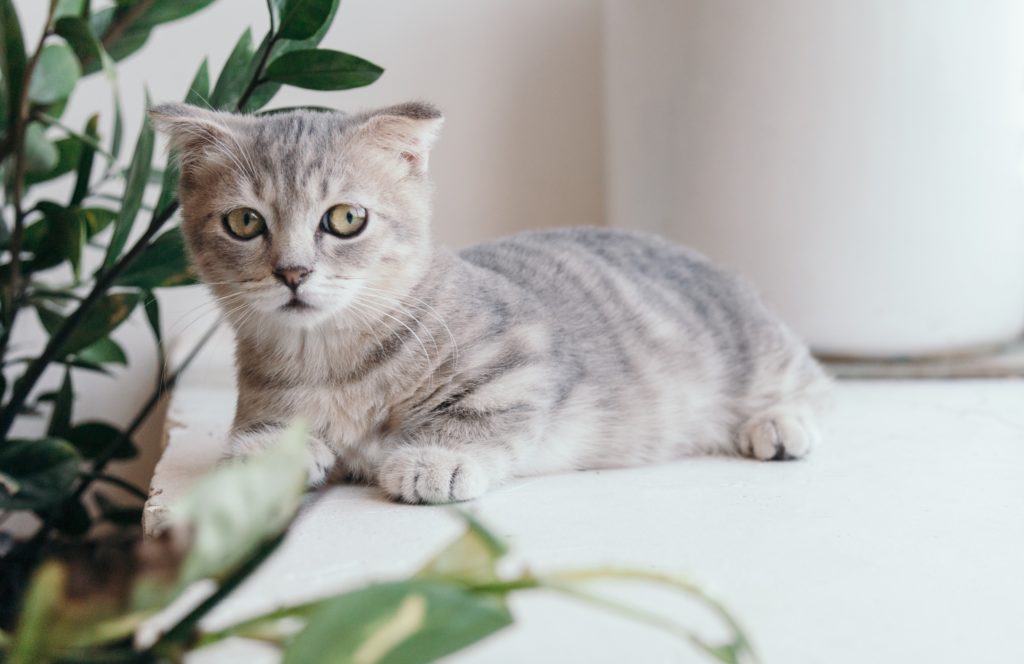
House plants are not always bad for a cat. Many types are not only safe for cats, but they actually improve your cat’s health. Air quality is an important and often overlooked element of health. Studies have shown that it is much more of a worry for your health than most people believe it to be. If you’re concerned about the quality of air in your living space, or if you just want to brighten the place up a bit, then a house plant can be a great way of improving your health and your cats. As long as you do your research about which plants to bring home, house plants can be a great way of improving your health and that of your cat.


